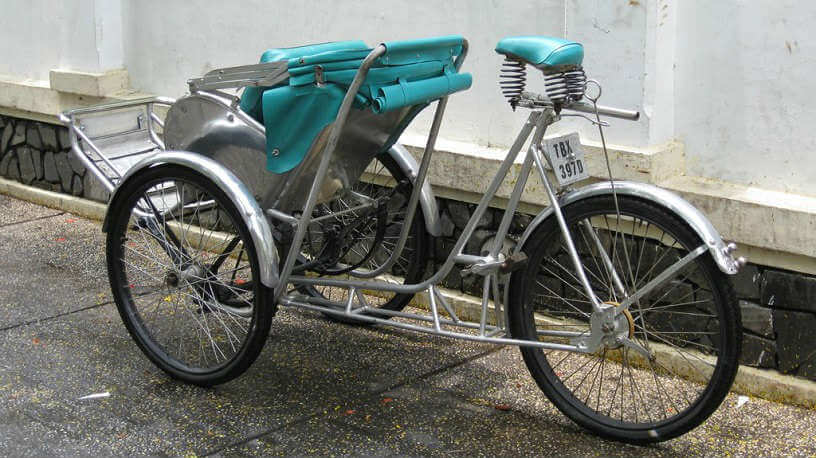How To Get Around Vietnam

Planning a holiday is all about living your daydreams. After all, you’ve been thinking about what you’ll do in Vietnam for a while; you’ve done the research on the attractions and accommodations and flights. There is likely one part of the trip that you haven’t yet considered, though: how to get around Vietnam once you land from Australia.
Like many Asian countries, bicycles and mopeds are common ways to get around town for the locals, and undoubtedly you’ll have a run in with at least one (but more likely many) cyclos as you navigate the cities of Vietnam. Is that the right option for you? Are there other ways to get around the cities? Use Cover-More’s guide to get insight into the common modes of transportation in Vietnam so you can check one more thing off your planning list and land ready and familiar with the transportation options available to you.
Xe Om (moped taxis)
The xe om (pronounced “zay-ohm”) are motorbike taxis that are all over Vietnam. Xe means motorbike and om means hug (or hold), so you can understand why they’re commonly referred to as “hugging taxis”. Essentially, when you hire a xe om, you will be jumping on the back of a motorbike and holding on to the driver as they navigate the streets and crowds to get you to your destination. As you may have figured out, this is not the safest mode of transportation, and accidents can happen. Always be aware of the situation you are putting yourself in and take all necessary precautions to stay safe and unharmed. Getting around by xe om is easy and affordable, as long as you don’t have a lot of luggage.
Compared to cyclos (mentioned below), the fares are reasonable, but be sure to negotiate the price before you hop on. You’ll have an endless supply of xe om drivers hanging around street corners, markets, hotels and bus stations so don’t worry about saying a fare is too expensive if one driver is trying to gyp you. You will find another one before you have a second to turn your head and look around.
Taxi
Taxis with metres, found in most major cities, are very cheap by international standards and a safe way to travel around at night. Average tariffs are about 10,000d to 15,000d ($0.60-$0.90AUD) per kilometre. However, dodgy taxis with go-fast meters do roam the streets of Hanoi and HCMC, and they often hang around bus terminals. Avoid using these rogues and only travel with reputable or recommended companies. Two taxis you can rely on are Mai Linh and Vinasun—they are two nationwide brands with superb reputations to their names.
Cyclo
Cyclos in Vietnam are basically bicycle rickshaws. They are slowly becoming less popular as other modes of transportation replace them, but cyclos remains constant in larger cities like Hanoi and Ho Chi Minh City. These rickshaws are environmentally friendly, cheap and a great option if you aren’t in a great hurry to get to your destination.
There are usually groups of cyclos around major markets and hotels, and unlike other drivers, many cyclo drivers can speak at least broken English. Bring a city map with you to aid in telling them where you want to go, and always settle on a price before you get in the rickshaw or go anywhere.
Approximate fares are between 10,000d-15,0000d ($0.60-$0.90AUD) for a short ride, between 20,000d and 35,000d ($1.20-$2.00AUD) for a longer or night ride, or around 40,000d ($2.30AUD) per hour.
Some travellers have reported being mugged by cyclo drivers in HCMC, so as a general rule, only hire cyclos only during the day there. When leaving a bar later at night, opt for a metered taxi instead.
Bus
The inclusion of the bus on this list is more to acknowledge that it exists as a way to get around the cities, though we don’t suggest it. Dealing with the bus can be more hassle than help, and the few travellers that do learn the system and brave the city buses often run into communication issues. In the end, taxis and xe om are the cheaper and more pleasant ways to get around Vietnam. That said, the bus systems in Hanoi and HCMC are not impossible to navigate – if you can get your hands on a bus map, you can puzzle out the organization, schedules, and costs.
Transportation always comes with its own set of worries and complications—delays, cancellations, misunderstandings, etc. To ease your worries, pick Cover-More for your travel insurance. They will protect you against these potential problems and keep you focused on your amazing Vietnamese holiday.
Image courtesy of Flickr user Stephan Ridgway
Planning a trip?
Discover Our COVID-19 Cover
To find out what our current* benefits do – and don’t – cover, please read:
Plus, for helpful destination-based COVID-19 information, don't forget to check the COVID-19 Travel Risk Tool before and during travel.
*The cover information contained on the above pages refers to Cover-More policies sold on or after 26 June 2023. For cover information on policies sold prior to this date, please read the relevant PDS.